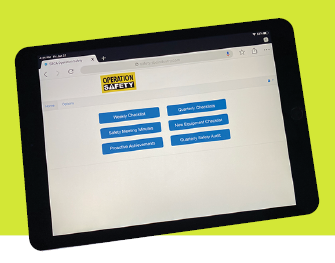Bolster Your Bottom Line Through Safety
Bolster Your Bottom Line Through Safety
What would you say is your biggest challenge when it comes to making improvements to your company’s safety culture? Is it time? Money? Employee investment?
What can get missed in focusing on these challenges is that when companies implement comprehensive, effective safety programs that allow them to identify, analyze, and evaluate all their risks, it’s much easier to accurately pinpoint areas for improvement and execute improvements in a cost-effective way. Said another way, when it comes to safety, devoting more time and resources can result in greater return on investment (ROI).
Whether you’re just getting started, feel like it’s time to revitalize what you have, or are curious what additions might boost your safety program’s ROI, this article provides a high-level roadmap for you to evaluate and improve your in-plant safety program.
If you don’t have any sort of formalized safety program, consider investing in a ready-made package, such as SBCA’s Operation Safety. While you’ll still need to spend some hands-on time to customize it for your facility, a program like Operation Safety will give you a solid, industry-specific foundation for building a robust and OSHA-compliant program at your component manufacturing plant that will start paying dividends immediately.
Alternatively, if you already have a formalized program and are looking for a few ideas to elevate your plan, consider the following:
- Create a “Return to Work” program: Finding productive ways to reincorporate an injured employee in a limited or light duty capacity is a positive way to improve both employee morale and your bottom line. Bringing employees back to the workplace as soon as they are medically able can help you retain them (reducing turnover), improve overall employee relations and reduce costs—even part-time work means collecting fewer disability benefits.
- Form an in-house safety committee: Regular meetings focused specifically on safety will show your employees that safety is a crucial part of your company culture while giving you a more thorough picture of what’s happening in your plant. Including employees from all levels of your company, starting with management, reinforces safety as a priority while bringing a variety of perspectives to the discussion.
- Document job safety analysis (JSAs) for each position in your plant: A JSA is a procedure to identify all potential hazards associated with the tasks of a specific job and to recommend the safest way to do the job. A good JSA includes a written description as well as photos (or brief videos) to define procedures and indicate proper personal protective equipment (PPE). JSAs make excellent training tools and can help reduce or eliminate hazards for a particular task.
Aside from non-monetary ROIs, like improved employee morale and company image, over time a comprehensive safety program will also generate returns in tangible ways. The following highlight some of the ways your safety program can start helping your bottom line today:
- Reduced injuries and incidents: The most obvious cost savings will be reducing the number of incidents in your facility. Even simple injuries like finger/hand lacerations can add up to thousands of dollars in claim expenses. You’ll save on expenses related to medical care, paid time off and (potentially) workers’ compensation litigation.
- Insurance premium reductions: While you may not see actual discounts on business insurance coverage by presenting your safety policies and procedures, a formal safety program is a great tool to maintain current rates and avoid potential premium increases. Including things like the aforementioned Return to Work program or safety committees are excellent ways to broaden your program with procedures that can help you maintain your premium rates.
- Compliance with regulations, laws, and standards: Non-compliance can be disastrous and will eventually cost an organization a lot of money in fines and remediation costs. A detailed safety program should help you identify any compliance concerns before an OSHA representative conducts an inspection, therefore limiting any downstream costs related to an inspection.
- Better employee retention, less turnover: Recruiting and retaining employees can be difficult and expensive, especially when you consider overtime paid when staff is limited, time spent training, and lower production output. Providing a safe and comfortable place where employees feel valued and want to stay is a critical foundation for limiting turnover and keeping your best people.
The benefits of creating and maintaining a safe work environment are numerous, from keeping your most valuable assets—your people—safe from harm, to bolstering your bottom line. Don’t let challenges like time or resources keep you from making a greater investment in your company’s safety culture.
Safety isn’t expensive…it’s priceless.


